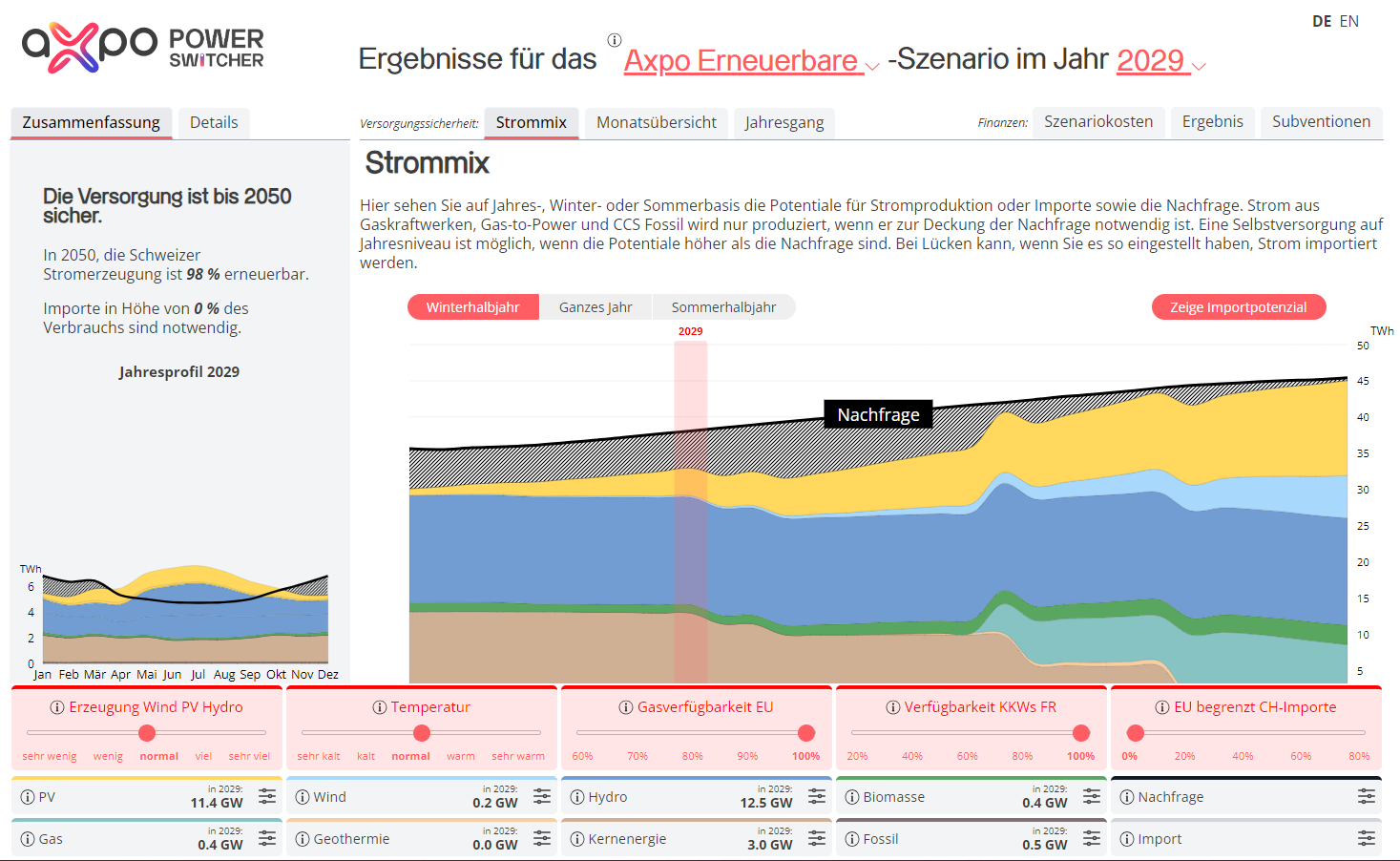Smooth operator 2
About 60 per cent of electricity in Switzerland is produced from hydropower. This amounts to an average of 36.5 TWh per year. Over 80 reservoirs and their power plants contribute about 47 per cent of this volume. As the largest producer of renewable energies, Axpo operates numerous storage power plants in Switzerland. They supply important power during the winter.
Storage power plants have several advantages. Usually located in the Alps, they store water in reservoirs situated at higher altitudes. Taking advantage of the height difference and under high pressure, this water is released to turbines located down in the valley in order to drive power generators. These plants can adjust their production to daily and yearly demand and produce valuable peak energy. Axpo operates various storage power plants in Switzerland. You can see where these plants are located on the map (German only).
Flexible storage power plants make it possible to partially balance out fluctuating water availability over the seasons. Today's storage lakes primarily serve to absorb natural inflows in the summer half of the year for electricity production in the winter half of the year, which is known as seasonal redistribution. Storage and, more importantly, reserve capacities are very important for peak power demand and the security of supply in the interconnected European grid.
Capacity of around 9 TWh electricity
Currently storage power plants can store a maximum of 8.85 TWh of energy, which is equivalent to almost 30 percent of the Swiss electricity consumption during the winter term. As shown in the statistics by the Swiss Federal Office of Energy, reservoirs in Switzerland are often at highest levels before the start of the winter half-year, to maximise the electricity production when it is most needed.
This is because in the winter months Swiss electricity production is not sufficient to meet demand (around 55 percent of annual electricity consumption). End consumption in the months from December to February averages around 5.5 TWh. Switzerland therefore has to import electricity from abroad during this time of year. The water retained in the reservoirs can help to reduce the deficit in Swiss winter electricity production, just as solar plants in the Alps could. Axpo is planning such a pioneer solar project at the Muttsee in Glarus.
Walls up to 200 metres high
Most Swiss reservoirs were built between 1950 and 1970. Large dams with heights of over 200 m were realised during this period (for example Grande Dixence and Mauvoisin in the Valais, Verzasca/Contra and Luzzone in the Canton of Ticino).
Nearly 90 per cent of the dams are used for power production. The others serve as water supplies or barriers against flooding, glacial till or avalanches. Dam safety is monitored by the Swiss government.
There are three types of dams in Switzerland:
- Embankment dam: An embankment dam is created with a rock and soil fill that is compacted at the core. In contrast to concrete dams, embankment dam walls are wider than they are high. Construction stability is ensured by its own weight and the flat slope angle of the wall.
- Gravity dam: A gravity dam is constructed from concrete or stone masonry and has a triangular cross-section that is very wide at the bottom and narrower at the crest. These dams hold back water by primarily using the weight of the material alone. Gravity dams are suitable in wide, low valleys with gently sloping sides.
- Arch dam: An arch dam is primarily constructed with concrete. In contrast to gravity dams, arch dams do not use their own weight to hold back the horizontal pressure of water. Instead they di-rect these forces to the left and right into the abutments. Arch dams are most suitable for narrow canyons or gorges with steep walls.




.jpg)





